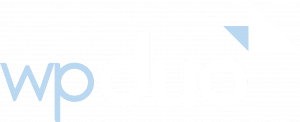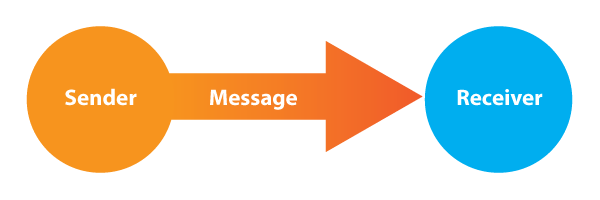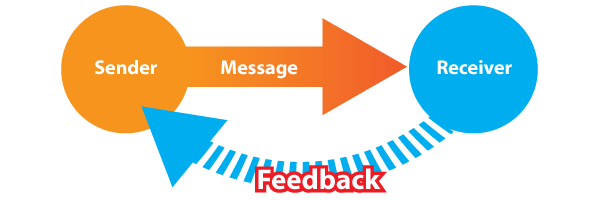Should your company be on Facebook?
Small business or large corporation, it doesn’t matter. There’s something you can do with social media, especially Facebook. It’s not just for kids hanging out. It’s evolved into a mass communications platform based around sharing and discovery. Think of it as a person-to-person voice where your company can micro-broadcast conversations with fans, prospects, and customers on a very personal level.
Understanding Communications
Before we dive in to what Facebook is all about, let’s talk a little bit about communications theory. First, let’s look at a (much simplified) model of what communications is.
Communications at a basic level. For sake of getting to the point, we’re going to ignore other elements like encoding, noise, medium, etc., as well as several other great communications models, but you can learn a lot more here if you’re really interested.
Communications, at its most basic, is just this. A one-way message moved from sender to receiver. This is how communications has traditionally worked for mass media: Television, Radio, print media, and even websites use this send and receive model for a receiver to consume messages.
Social Media opens up conversational communications
So what changed once companies were able to use social media platforms like Facebook and Twitter? Now it’s a two-way street.
Adding feedback to a model of mass media communications.
Social media have effectively expanded what is possible with mass media. Traditional mass media (radio, TV, print) were a one-way communications device (one sender, many receivers), social media is a platform for mass two-way communications. With one media platform, such as Facebook, Twitter, or YouTube, a sender can create a message, send it to a receiver, and get instant feedback. With social media the receivers become senders, and it becomes a much more conversational form of mass media.
OK, so why Facebook and not other services?
Two reasons: Reach and EdgeRank. Facebook has a huge user base, can target local users if you decide to do paid advertising, and is all about sharing and conversation. It’s today’s major portal where people discover what’s going on in people and things they’re interested in. EdgeRank, which I’ve written on previously, takes sharing a step further – when something is posted, it shows up on a person’s main feed based on their interest. With user engagement this information can also show up on their friends’ main feed, taking your message to a larger and larger audience.
Strategy is key
In the past, I’ve discussed a few ideas of what to post. But when you first start out, think about how you can use the platform to further your marketing goals.
If you focus on relationship and value marketing, creating conversations about what’s going on in your business or industry, talking about trends, talking about lifestyles that fit your target market, and sharing how your customers interact with your company (event photos, encouraging customer sharing) might be one direction.
If you’re blogging and using content marketing methods, use Facebook and other social media platforms to drive attention and engagement to your blog! By providing great information that’s relevant to what your customer needs to know (and isn’t simply news about your company), you can grow interest in what you publish and gain more attention in your industry.
Whatever your method, use Facebook as a customer service portal, to run promotions and specials and to get feedback and insight into your most engaged customers. Encourage your fans to get in touch with you via Facebook with customer service issues and solve problems with customers publicly so others can see that you care that they’re satisfied. Give away freebies and promotions to encourage more interaction from your core fans, such as printable coupons, sweepstakes, and “whisper codes” (come in today and save $5 on your purchase by telling your cashier “I’m a Facebook Fan”). And finally, ask questions to get insight into what your customers think – not just about your product/service, but also about things that they’re interested in.
And don’t hard sell. Facebook isn’t the platform to be constantly hard-selling to potential customers. Facebook is all about communication and focusing on the customer rather than trying to make an immediate sale. Use the methods above to build brand value and engagements, and try soft-sales approaches with occasional coupons and promotions to grow sales instead.
Further thoughts
Once you’re on Facebook (and let your customers know it via your other social media and marketing channels) try some of these methods to grow attention and engagement with your audience. As you get the hang of it, it becomes something you can maintain with as many or few hours a day as you want to commit to it. While I recommend at least 1-3 posts per week, it depends on your goals, your marketing strategy, and how you’re working to drive attention and engagement to your brand.
What’s your company doing on Facebook? Let me know what you think by leaving a comment!
SEE ALSO: Why B2B should care about Social Media



Comments are closed.